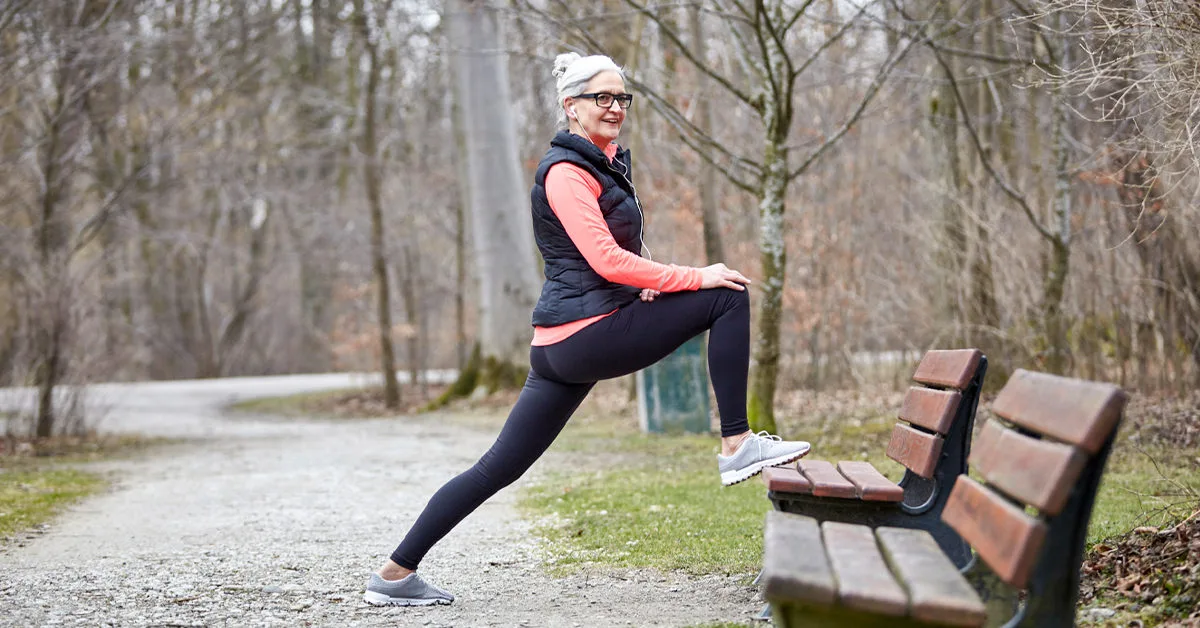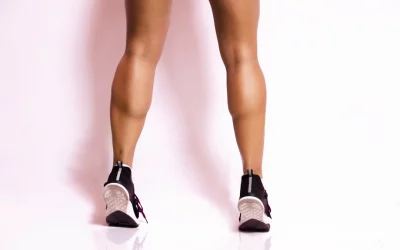The iliacus muscle might not be a household name, but it’s the unsung hero of your hip flexors, keeping your movements smooth and posture on point.
This little powerhouse helps you lift your knees and bend at the waist, so you can dance, walk, or even get out of a chair without feeling stiff. However, long hours at the desk, poor posture, or intense workouts can turn this muscle into a source of discomfort.
The good news? Targeted stretches can help bring relief. In this article, we’ll dive into stretches that kick iliacus pain to the curb, boost flexibility, and get you moving comfortably again!
How Iliacus Muscle Pain Can Affect Your Daily Life
The iliacus muscle, located deep in your pelvis, is essential for hip flexion and stability, helping you with everyday activities like walking and climbing stairs. When this muscle is happy, you hardly notice it, but when it’s not, you’ll definitely feel the difference.
Common symptoms of iliacus muscle pain include discomfort in the lower abdomen or groin, tightness in the hips, and pain that may radiate into the lower back or thighs. Struggling to lift your legs can turn simple tasks into challenges, while poor posture from compensation can lead to further aches in other areas.
Understanding how iliacus pain affects your daily life is crucial for reclaiming your comfort and mobility.
Effective Iliacus Muscle Stretch Techniques
Psoas and Iliacus Stretch
The Psoas and Iliacus Stretch is a key exercise targeting the iliacus and psoas muscles, which play a vital role in hip mobility and stability. Stretching these muscles helps alleviate tightness and improves overall flexibility, making it easier to move without discomfort in the hips and lower back.
This stretch is especially beneficial as it helps:
-
Relieve tension in the iliacus and psoas muscles, reducing pain.
-
Enhance hip mobility for better posture and daily movement.
-
Improve core stability, aiding in a balanced, pain-free lower body.
To perform the Psoas and Iliacus Stretch, follow these steps:
-
Stand upright with feet hip-width apart.
-
Step back with your right foot into a lunge, keeping your left knee over your left ankle.
-
Lower your right knee to the ground and gently shift your weight forward to deepen the stretch.
-
Hold for up to 30 seconds, breathing deeply, and then switch sides.
Kneeling Hip Flexor Stretch
The Kneeling Hip Flexor Stretch is a fantastic way to relieve iliacus tightness, especially if you’ve been sitting for prolonged periods. It directly targets the hip flexors, helping to release tension and prevent lower back pain related to tight hips.
This stretch is particularly beneficial as it helps:
-
Increase hip flexibility, reducing strain on the lower back.
-
Improve balance and core engagement, supporting posture.
-
Release tension in the hip flexors, enhancing comfort in movement.
To perform the Kneeling Hip Flexor Stretch, follow these steps:
-
Begin kneeling with your right knee on the ground and your left foot forward, forming a 90-degree angle.
-
Engage your core and press your hips forward, keeping your torso upright.
-
Feel the stretch along the front of your right hip.
-
Hold for up to 30 seconds, then switch to the other side.
Lunging Hip Flexor Stretch
The Lunging Hip Flexor Stretch is a powerful way to target the iliacus and psoas muscles, releasing tension in the hip flexors while also improving overall flexibility in the hips and lower back. This stretch is particularly helpful for those who spend long hours sitting, as it addresses tightness in the front of the hip.
This stretch is especially beneficial as it helps:
-
Directly stretch the iliacus and psoas muscles, enhancing hip flexibility.
-
Alleviate tightness in the hip flexors, which can contribute to lower back discomfort.
-
Promote greater mobility in the hips, making everyday movements more comfortable.
To perform the Lunging Hip Flexor Stretch, follow these steps:
-
Begin by kneeling on one knee, with the other foot positioned forward, forming a 90-degree angle at both knees.
-
Engage your core and slowly push your hips forward, keeping your back straight and your shoulders relaxed.
-
Feel the stretch in the front of your hip, particularly in the back leg.
-
Hold the position for up to 30 seconds, breathing deeply, then switch to the other side.
Lizard Pose
The Lizard Pose is a powerful hip flexor stretch that focuses on the iliacus and enhances hip flexibility. This stretch is particularly useful for anyone who spends long hours sitting, as it promotes hip mobility and reduces stiffness.
This stretch is especially beneficial as it helps:
-
Deepen flexibility in the hip flexors and iliacus.
-
Alleviate tension in the hips and lower back.
-
Boost circulation and range of motion for improved comfort.
To perform the Lizard Pose, follow these steps:
-
Start in a low lunge with your right foot forward and left leg extended back.
-
Place both hands on the inside of your right foot, lowering your left knee towards the floor.
-
Press your chest forward, keeping your hips low to intensify the stretch.
-
Hold for up to 30 seconds, then switch sides.
Supine Hip Flexor Stretch
The Supine Hip Flexor Stretch is a gentle yet effective stretch that helps alleviate iliacus tension by extending the hip while maintaining a neutral spine. It’s an excellent choice for a relaxing stretch at the end of the day.
This stretch is especially beneficial as it helps:
-
Relieve tightness in the iliacus and other hip flexors.
-
Improve hip flexibility and posture.
-
Reduce lower back strain by relaxing the hip area.
To perform the Supine Hip Flexor Stretch, follow these steps:
-
Lie on your back with knees bent and feet flat on the floor.
-
Slowly pull one knee towards your chest while keeping the opposite leg extended on the floor.
-
Hold the position for up to 30 seconds, feeling the stretch in the hip flexor of the extended leg.
-
Switch sides and repeat.
Incorporating these essential iliacus stretches into your daily routine can provide lasting relief, promote flexibility, and improve your hip mobility, making it easier to stay active and pain-free.
Tips for Safe Stretching
When stretching the iliacus muscle, safety and technique are key to achieving effective relief without causing strain. Follow these guidelines to ensure your stretches are beneficial and comfortable:
-
Warm-Up First: Always start with a light warm-up, like gentle walking or hip rotations, to increase blood flow to the muscles and prepare them for stretching.
-
Focus on Gentle Movements: Avoid aggressive or jerky motions, which can lead to muscle strain. Move slowly into each stretch, stopping if you feel any sharp or sudden pain.
-
Frequency and Duration: For best results, aim to stretch the iliacus muscle 3-4 times a week, holding each stretch for up to 30 seconds. This frequency helps to maintain flexibility without overstressing the muscle.
-
Listen to Your Body: Overstretching can do more harm than good. If you experience persistent soreness, pain, or muscle tightness after stretching, reduce the intensity and allow time for rest.
Signs of overstretching include prolonged soreness, sharp pain, or reduced flexibility. If any of these occur, ease back and consider using props or adjusting your posture to prevent strain.
Exercise Smarter with WeStretch: Your All-in-One Stretching Assistant
A consistent full-body stretching routine is essential for improving flexibility, supporting injury prevention, and enhancing overall well-being. Carefully following simple yet effective stretches targeting the hamstrings, hip flexors, back, quads, chest, and shoulders, individuals of any fitness level can reap the benefits.
Regular stretching, with attention to proper form and consistency, can help you move more freely, recover faster, and feel better in everyday activities.
Looking for a way to add some fun to your stretching routine? Check out WeStretch—an app that’s like your own personal stretch coach! With tailored plans, easy-to-follow demos, and progress tracking, it’s got everything you need to keep you limber and on point. Ready to get flexible? Sign up today and let’s get stretching!
FAQ
How often should I perform iliacus muscle stretches for relief?
For effective relief, aim to stretch your iliacus muscle 3-4 times per week. Consistent practice helps maintain flexibility, reduces tension, and improves hip mobility. Hold each stretch for up to 30 seconds, ensuring you avoid overstretching. Regular stretching can gradually relieve discomfort and enhance overall comfort and movement in your daily activities.
Can iliacus stretching help reduce lower back pain?
Yes, stretching the iliacus muscle can reduce lower back pain. The iliacus connects to the pelvis and spine, so when it’s tight, it can pull on the lower back, causing discomfort. Targeted stretches relieve this tension, improve hip flexibility, and contribute to better posture, which helps alleviate pressure on the lower back.
What’s the best way to warm up before stretching the iliacus muscle?
A light warm-up, like brisk walking or hip rotations, is ideal before stretching the iliacus. This increases blood flow to the area, preparing the muscles for flexibility work and reducing the risk of strain. Warm-ups make stretching more effective and help ease tightness without putting excess stress on the muscles.
How can I tell if I’m overstretching my iliacus muscle?
Overstretching can cause persistent soreness, sharp pain, or even decreased flexibility. If you experience any of these signs, ease up on the intensity, and allow rest between sessions. Focus on gentle, controlled movements during each stretch to ensure a comfortable range and prevent any unnecessary strain or potential injury.
Can I use WeStretch to help with iliacus pain?
Absolutely! WeStretch offers guided routines, tailored plans, and real-time feedback from virtual coaches Ada and Bruce. The app provides personalized stretch sequences, perfect for targeting the iliacus muscle, while tracking your progress to ensure a safe, effective stretching journey.






